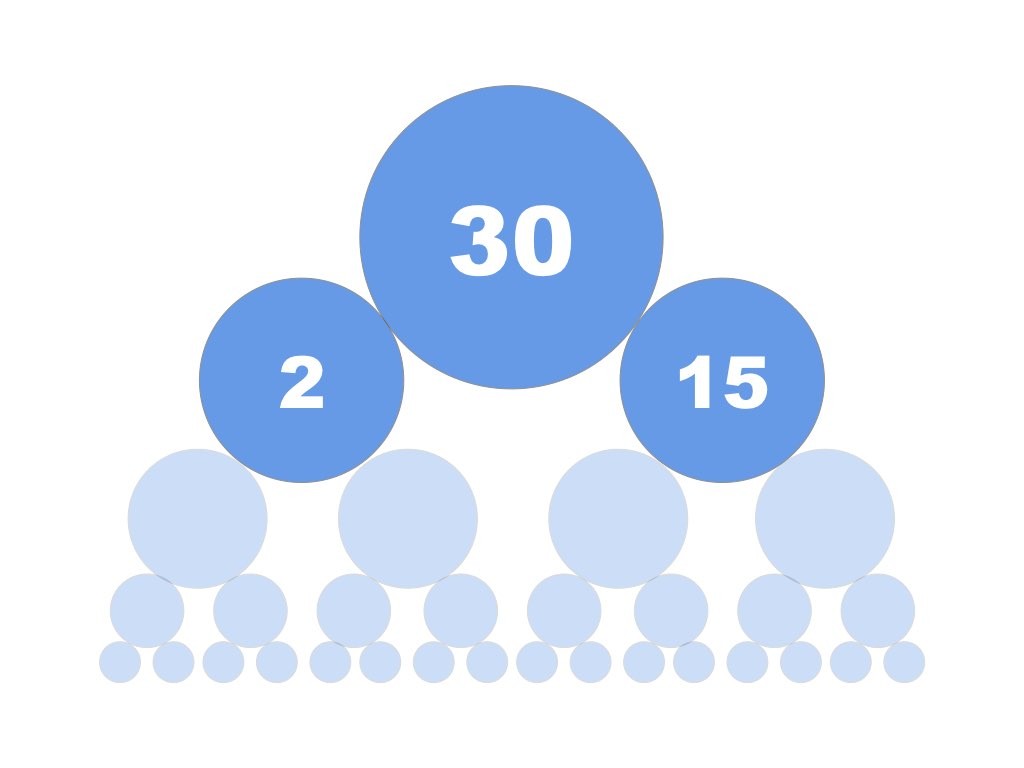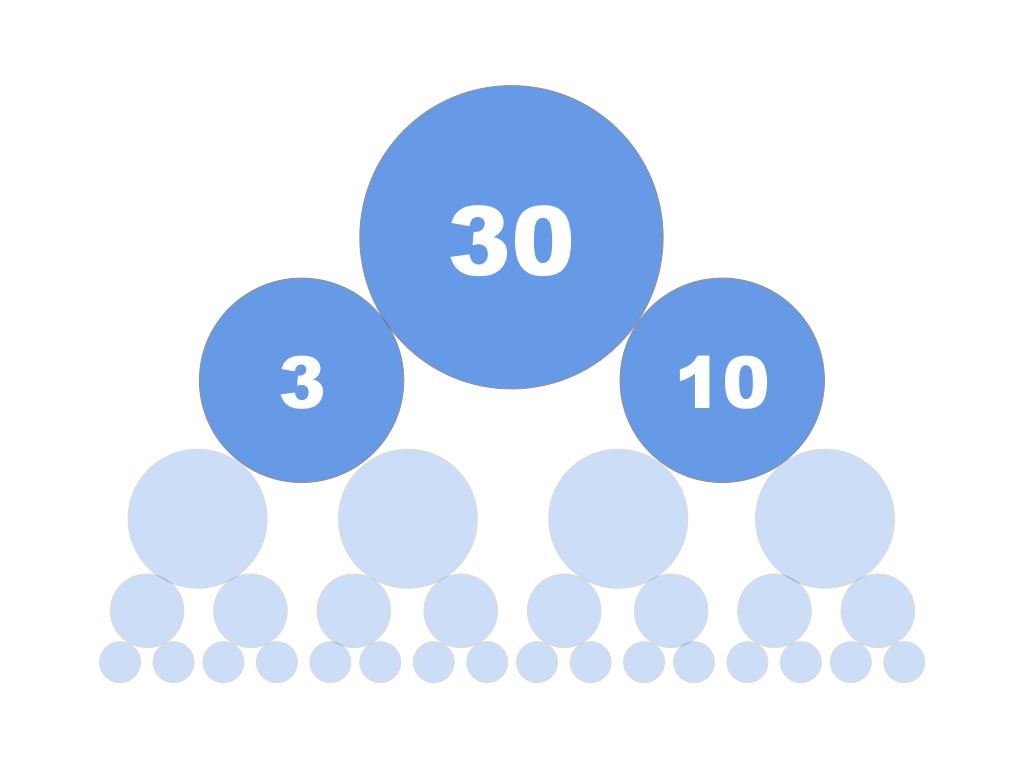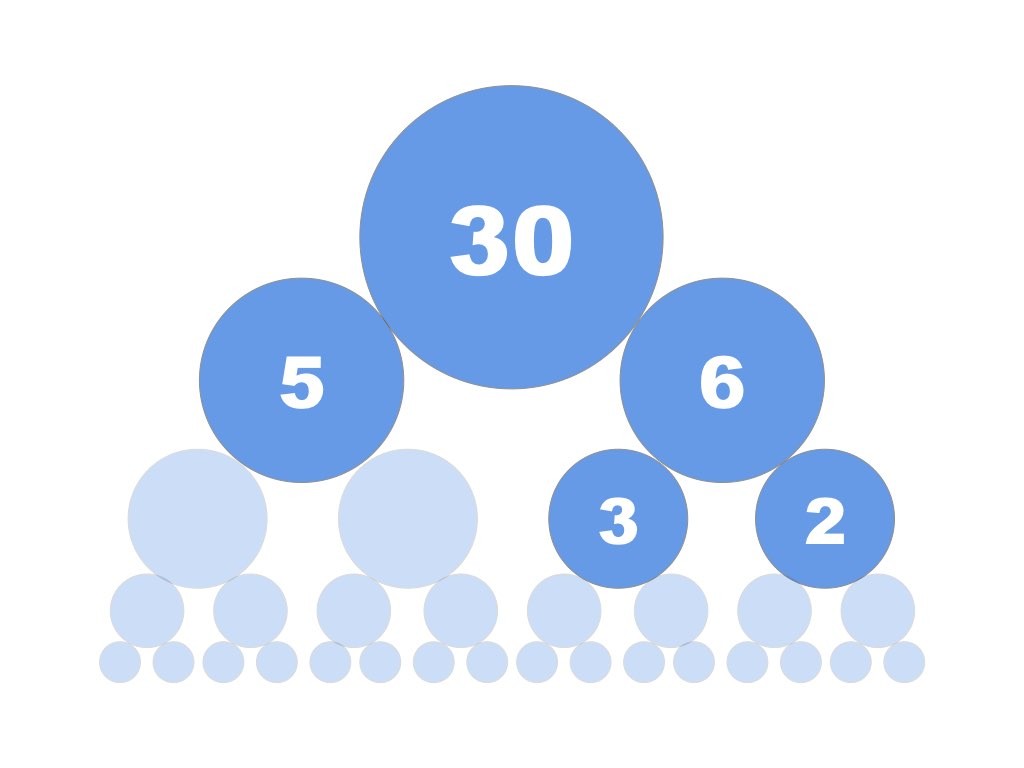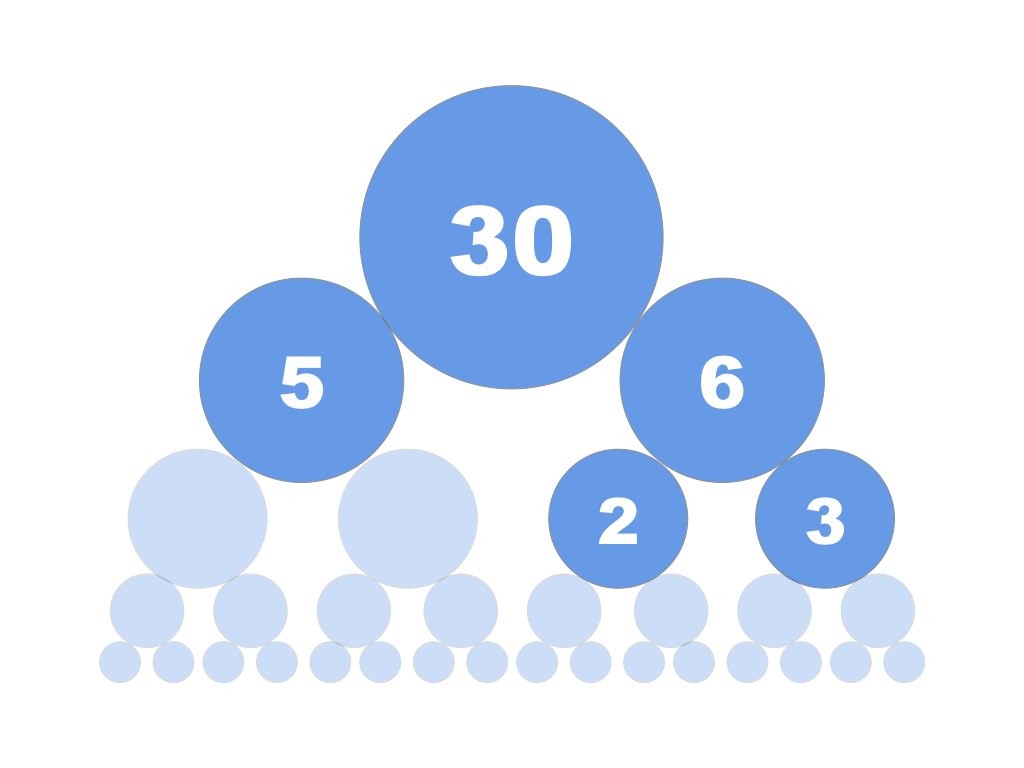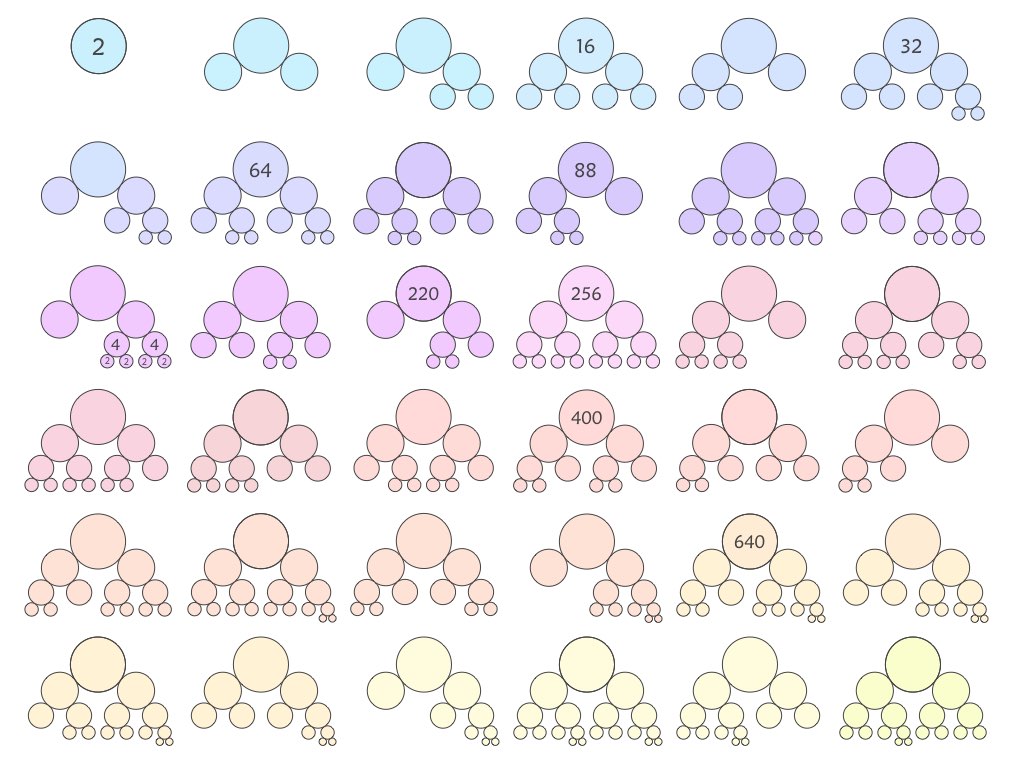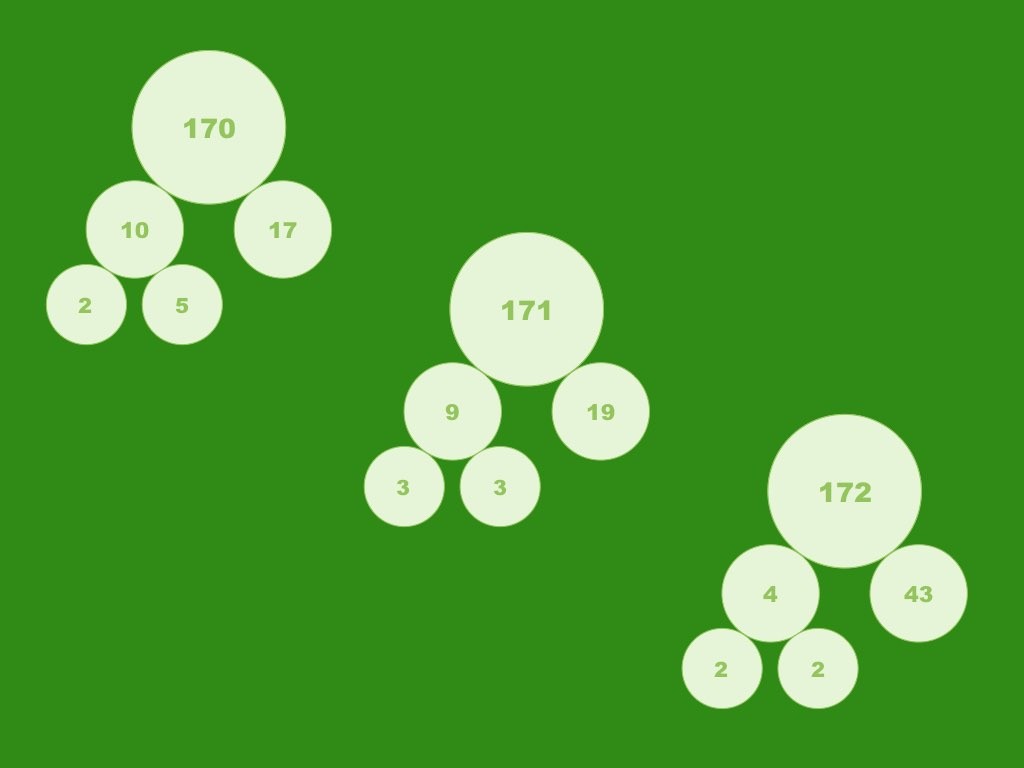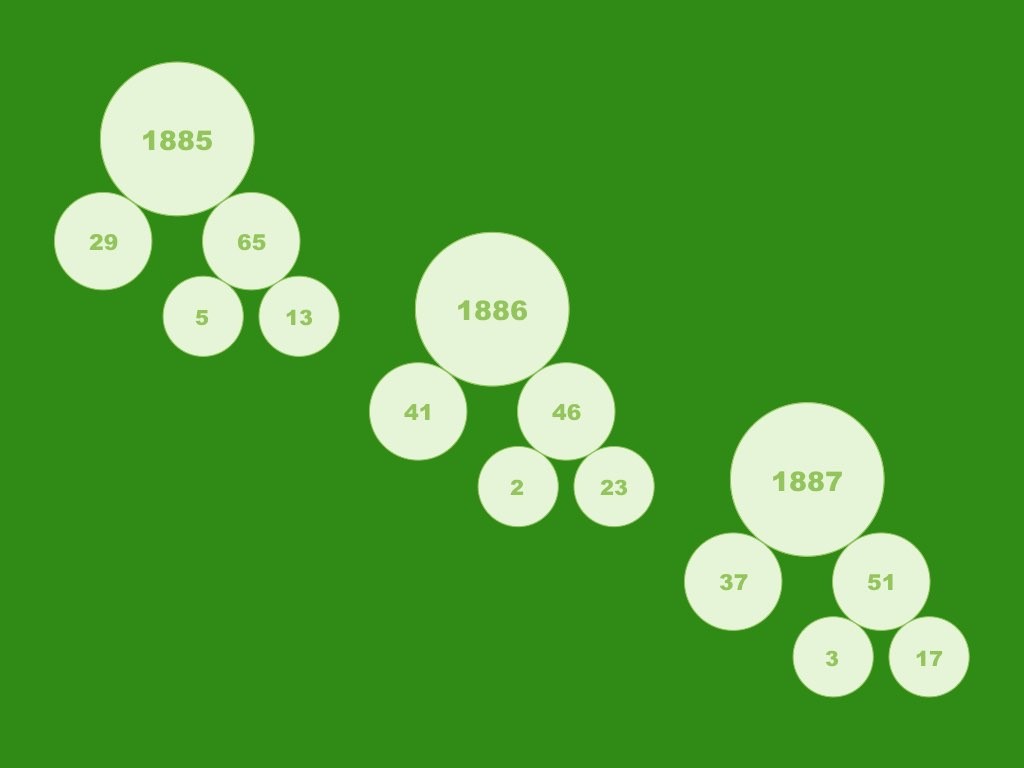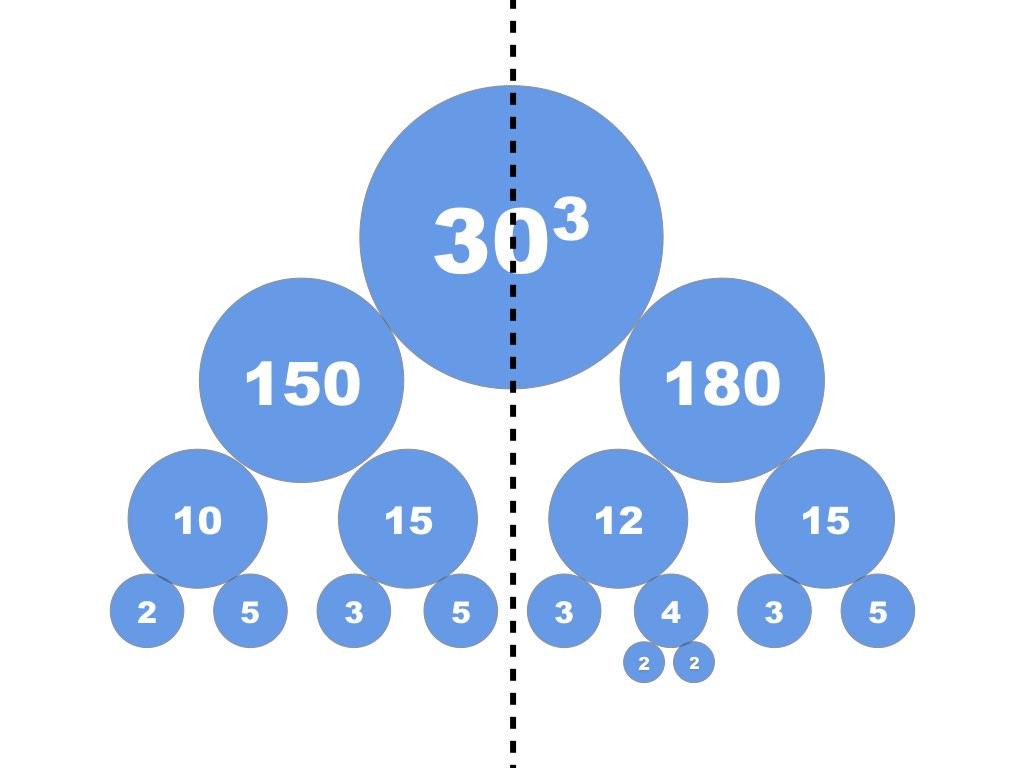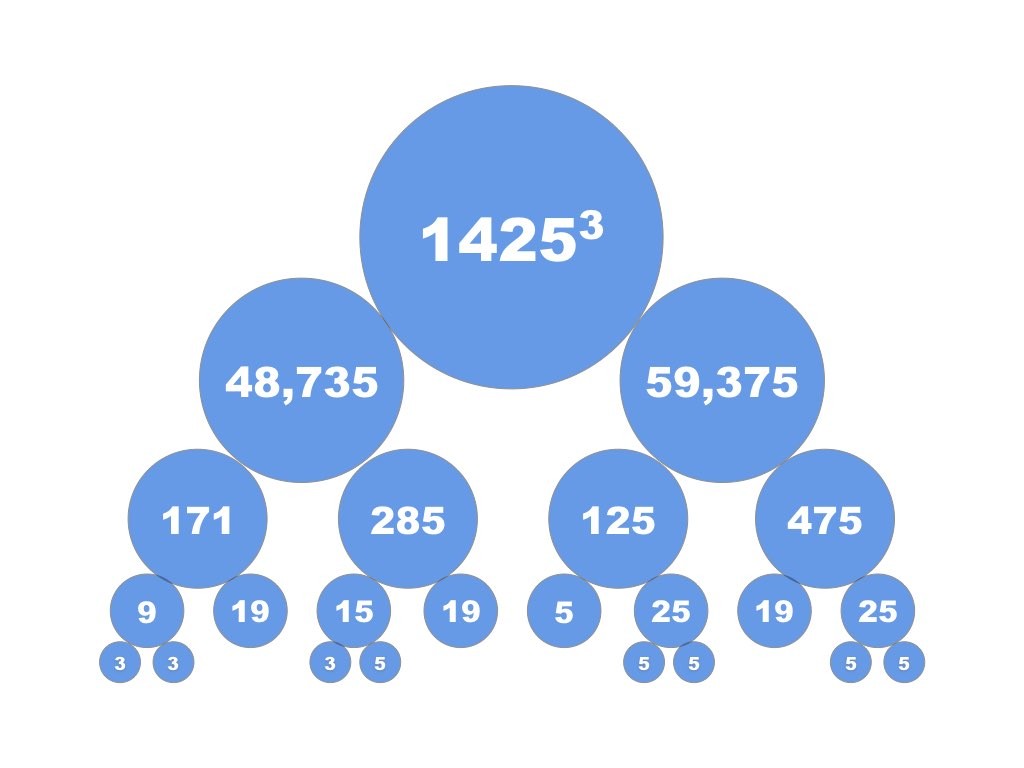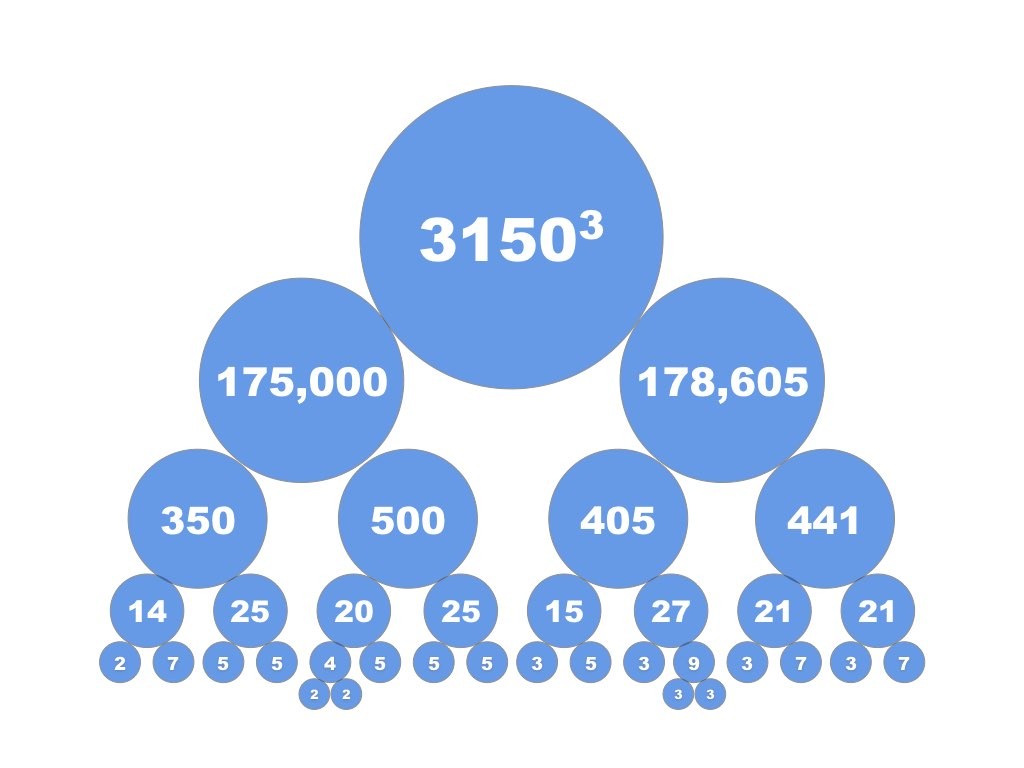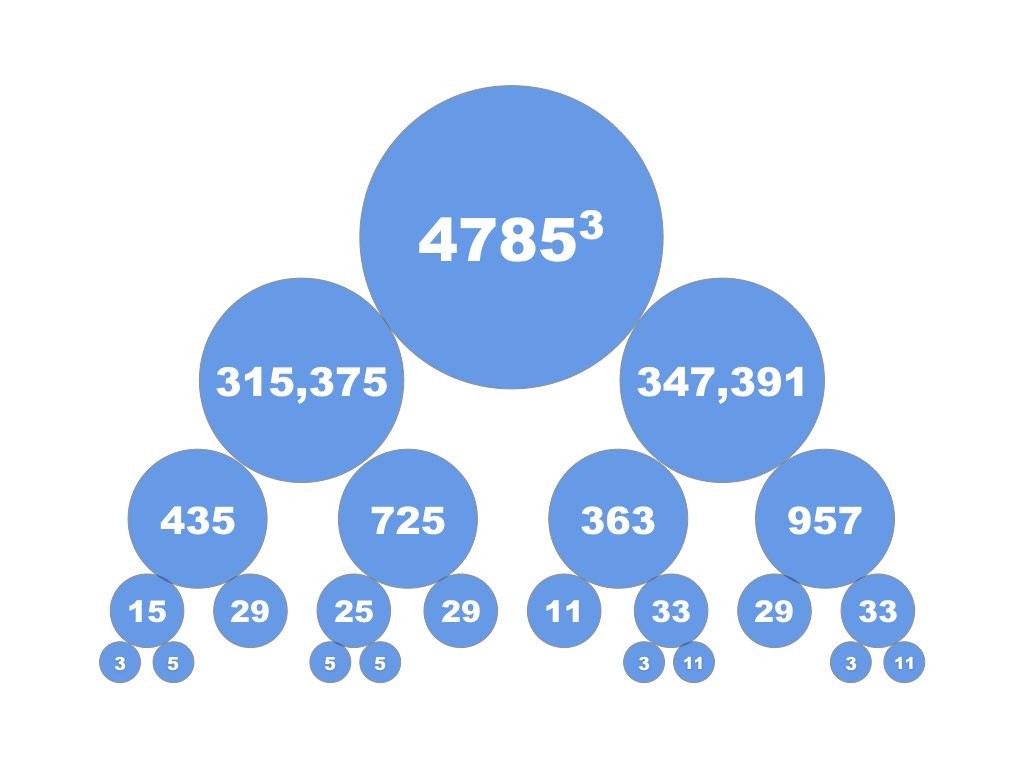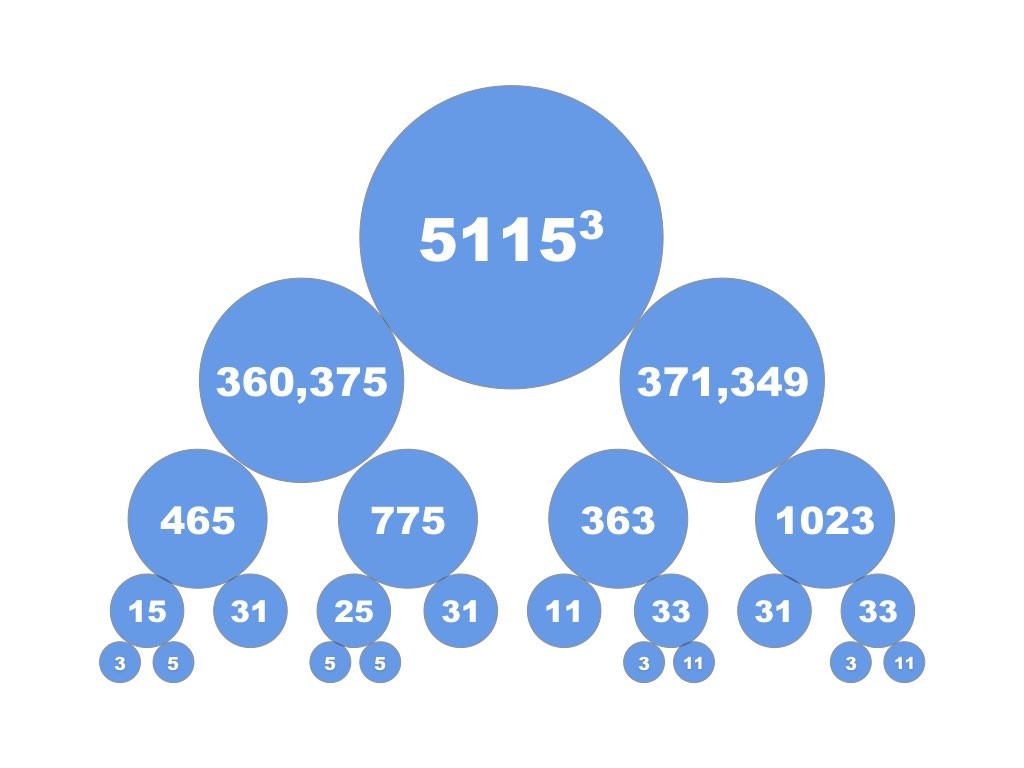The base integral fission worksheet has changed a lot over the years since I first introduced it into the classroom. Now it comes with a smattering of hints. Some students tackle the worksheet from the top down – others jump to the hint numbers and solve them first. I like giving students this flexibility. The color gradient is also new. I always like beauty in the math classroom – and this is one of my favorites if a school can afford color.
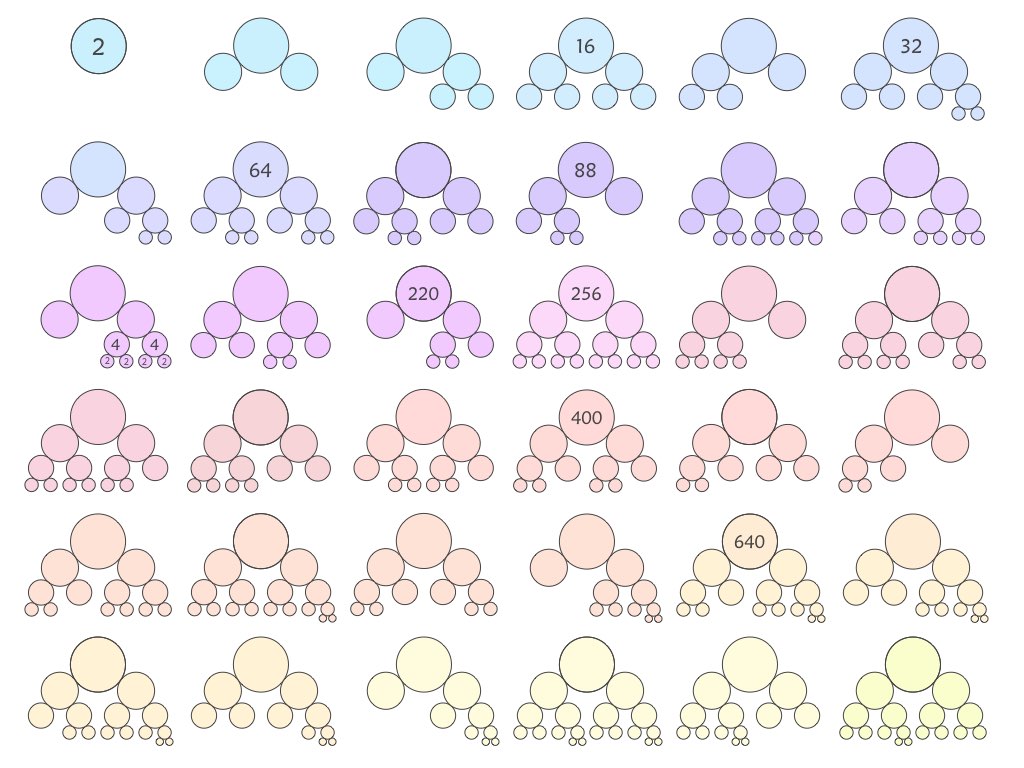
Integral Fission as a mini-mathematical universe
(MathPickle, 2021)
An alternate way to introduce integral fission is through inductive problem solving. In Mini mathematical universes students try to figure out what is going on as they uncover the rules.
Integral Fission
(MathPickle, 2011)
This video was first created in 2011. I’ve refined Integral Fission in the intervening years. The slideshow at the top is the result.
Integral fission is a variant of prime factorization trees allows the creation of a treasure trove of puzzles. The newest puzzle is to find the first time each Integral Fission shape is encountered. Download the 2019 Puzzle-sheet, instructions and solutions here.
Standards for Mathematical Practice
MathPickle puzzle and game designs engage a wide spectrum of student abilities while targeting the following Standards for Mathematical Practice:
MP1 Toughen up!
Students develop grit and resiliency in the face of nasty, thorny problems. It is the most sought after skill for our students.
MP2 Think abstractly!
Students take problems and reformat them mathematically. This is helpful because mathematics lets them use powerful operations like addition.
MP3 Work together!
Students discuss their strategies to collaboratively solve a problem and identify missteps in a failed solution. MathPickle recommends pairing up students for all its puzzles.
MP4 Model reality!
Students create a model that mimics the real world. Discoveries made by manipulating the model often hint at something in the real world.
MP5 Use the right tools!
Students should use the right tools: 0-99 wall charts, graph paper, mathigon.org. etc.
MP6 Be precise!
Students learn to communicate using precise terminology. MathPickle encourages students not only to use the precise terms of others, but to invent and rigorously define their own terms.
MP7 Be observant!
Students learn to identify patterns. This is one of the things that the human brain does very well. We sometimes even identify patterns that don't really exist 😉
MP8 Be lazy!?!
Students learn to seek for shortcuts. Why would you want to add the numbers one through a hundred if you can find an easier way to do it?
Please use MathPickle in your classrooms. If you have improvements to make, please contact me. I'll give you credit and kudos 😉 For a free poster of MathPickle's ideas on elementary math education go here.




